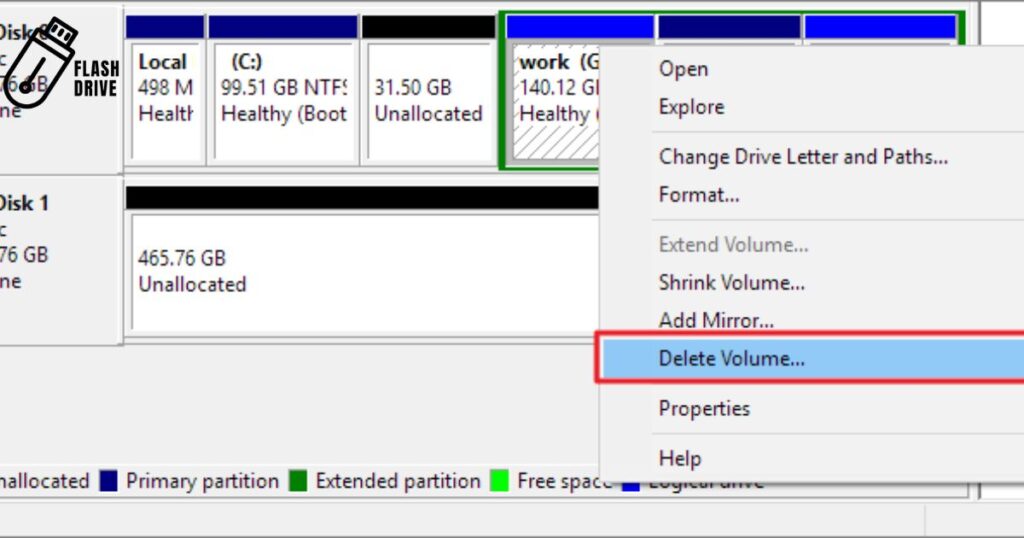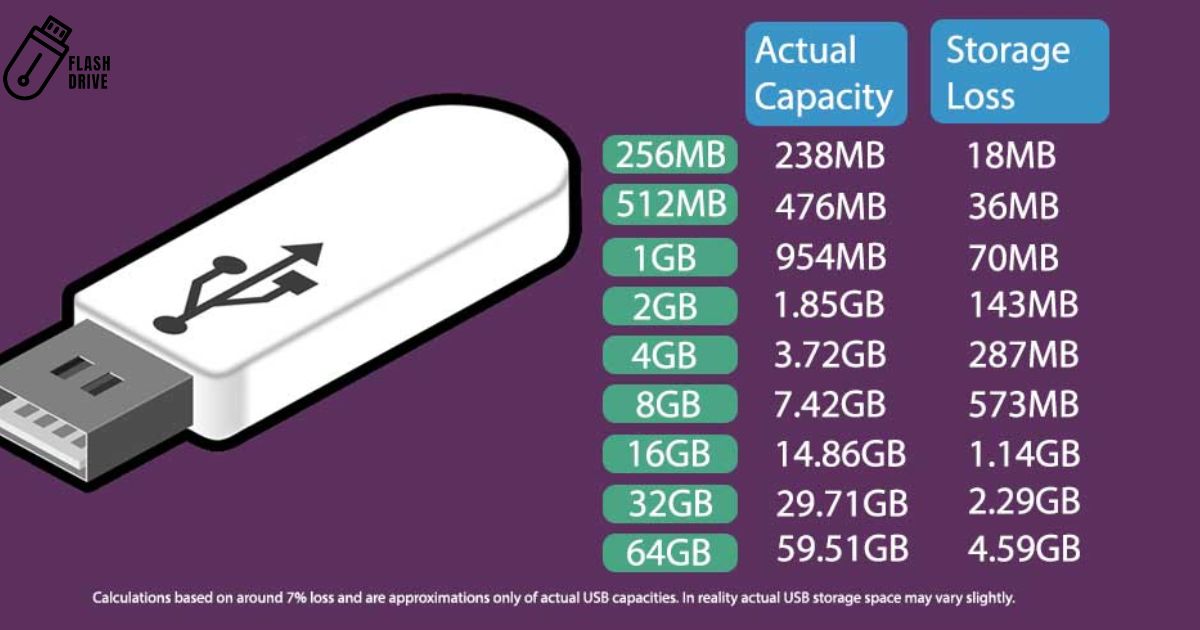Expanding flash drive capacity involves increasing the storage space on a USB drive. To do this, one can use external devices like USB hubs or adapters to connect additional flash drives, effectively combining their storage.
To increase the storage capacity of a flash drive, you can use an external storage device like a microSD card or an external hard drive. Have you ever wondered how to increase the capacity of a flash drive? And connect it to the USB port of your flash drive. This allows you to store more data by extending the available space. Alternatively, you can compress files or delete unnecessary data to free up room on the existing flash drive.
Unlock the full potential of your flash drive. Learn simple tricks to boost its storage capacity and make room for all your important files. Upgrade your storage game effortlessly.
How to format Flash drives to the NTFS file system?
Easily expand your flash drive capacity by formatting it to the NTFS file system. Begin by connecting your flash drive to your computer and opening File Explorer. Locate the flash drive, right-click on it, and select “Format.”
In the format window, choose NTFS from the “File System” dropdown menu and opt for a quick format for efficiency. Assign a unique name under “Volume Label,” check the box for a quick format, and click “Start” to initiate the process. Once complete, click “OK” – your flash drive is now ready with an enhanced capacity, thanks to the NTFS file system.
How to activate the NTFS format option?
To expand flash drive capacity and enable NTFS format, follow these simple steps. First, insert your flash drive into the USB port. Next, right-click on the drive icon in File Explorer and select “Format.” In the format window, choose NTFS from the file system options. Click “Start” to initiate the formatting process. Remember to back up your data before proceeding, as formatting erases all content.
After completion, your flash drive will be capable of handling larger files and will be compatible with Windows features. To further expand flash drive capacity, consider using third-party tools or compression techniques. Once the NTFS format is applied, you can enjoy enhanced storage capabilities and improved file management. Ensure that your device supports NTFS before proceeding with the format. With these steps, you can effortlessly expand flash drive capacity using the NTFS format option.
Is Reduced Space on a USB Drive a Problem?
Reduced space on a USB drive can indeed pose challenges, especially as technology advances and files become larger. Users often encounter the need to expand flash drive capacity to accommodate growing data demands. With limited space, transferring files or carrying essential documents can become cumbersome.
It is crucial to consider the purpose of your USB drive, as tasks like storing multimedia or large software files may require ample space. To overcome this issue, one solution is to expand flash drive capacity by investing in higher-capacity drives. Regularly assessing your storage needs and opting for larger USB drives can prevent the inconvenience of running out of space.
Efficiently managing files and utilizing cloud storage are additional strategies to address limited space on a USB drive. In conclusion, understanding the importance of ample storage and taking proactive steps to expand flash drive capacity can significantly enhance your digital experience.
How Can a USB Drive’s Storage Decrease?
A USB drive’s storage may appear to decrease due to various factors. Firstly, files and data accumulation over time can consume available space, limiting the drive’s capacity. Additionally, hidden system files, temporary files, and backup data may occupy a room on the drive, contributing to the perceived reduction in storage.
Deleting unnecessary files and performing regular maintenance can help mitigate this issue. Another factor is potential corruption or errors in the drive’s file system, leading to inaccessible or lost storage space. It is crucial to use reliable antivirus software to prevent malware or viruses that could compromise data and diminish available storage.
Users can also consider upgrading or using tools to expand flash drive capacity, ensuring ample space for future storage needs. In conclusion, managing and maintaining a USB drive effectively, along with efforts to expand flash drive capacity, can address the common reasons behind storage decrease.
How Can You Restore a USB Drive Back to Full Capacity?
Restoring a USB drive to its full capacity is a straightforward process. To begin, insert the USB drive into your computer. Open the Disk Management tool on Windows or Disk Utility on Mac. Locate the USB drive in the list of storage devices.
Right-click on the USB drive and choose “Delete Volume” or “Erase” to remove existing partitions. Afterward, create a new partition with the full capacity. Ensure that the file system is compatible with your operating system. Format the drive, and your USB should now be back to its original size.
This method allows you to expand flash drive capacity effortlessly. Remember to back up any important data before performing these steps. With these simple actions, you can easily restore and expand flash drive capacity to its maximum potential.
If You Are on Windows
If you are on Windows and looking to expand flash drive capacity Simply insert your flash drive, right-click on it, and select “Format.” opt for NTFS as the file system, which allows larger storage sizes. With this quick process, you’ll effortlessly expand your flash drive’s capacity and make the most out of your storage solution.
Method 1 Manually Delete the USB Drive’s Contents
- Access the USB Drive: To expand flash drive capacity manually, start by connecting your USB drive to your computer.
- Open File Explorer: Navigate to File Explorer and locate your USB drive to view its contents.
- Backup Important Data: Before proceeding, ensure you’ve backed up any crucial data to avoid unintentional data loss during the process of expanding flash drive capacity.
- Delete Unnecessary Files: Identify and delete unnecessary files or folders on the USB drive to create additional space and gradually expand flash drive capacity.
- Empty Recycle Bin: After deleting files, do not forget to empty the Recycle Bin to free up space completely and maximize the flash drive’s capacity.
- Review Large Files: Identify and remove any large files that you may not need, further creating room to expand flash drive capacity.
- Remove Redundant Applications: If there are portable applications on the USB drive that are no longer needed, uninstall them to reclaim space and facilitate the expansion of flash drive capacity.
- Check Hidden Files: Explore hidden files and folders on the USB drive, as they might consume space unnecessarily. Delete any that are not essential to free up capacity.
- Organize Files: Organize the remaining files on the flash drive by creating folders, which can help manage the space more efficiently as you work to expand flash drive capacity.
- Repeat Regularly: Manual deletion is an ongoing process. Regularly review and delete unnecessary files to ensure optimal use of your flash drive and continually expand its capacity as needed.
Method 2 Format the USB Drive
When it comes to enhancing your digital storage capabilities, Method 2, involving the formatting of your USB drive, stands out as an efficient approach. To begin, insert the flash drive into your Windows device and right-click on the drive icon.
opt for the “Format” option, and crucially, select the NTFS file system to unlock the potential to expand flash drive capacity. This straightforward method can be repeated as needed, ensuring your USB drive evolves into a more robust storage solution. By embracing this technique, users can effortlessly optimize their flash drives, accommodating larger data volumes with ease.
Paragraph 1: Method 3 – Delete Its Partitions

A simple yet effective strategy to expand the flash drive capacity involves Method 3 – deleting its partitions. Begin by connecting your flash drive to your Windows computer. Access the Disk Management tool, locate your flash drive, and right-click to delete existing partitions.
Follow this by creating a new partition with the entire available space. Repeat this process as needed, and voilà, you will successfully expand the flash drive capacity, creating a more spacious and efficient storage solution for your data needs.
Paragraph 2: Method 4 – Erase Everything Securely
For those seeking a comprehensive solution to expand the flash drive capacity while ensuring data security, Method 4 comes into play. Connect your flash drive and use a secure erasure tool to wipe all existing data.
This method not only provides a clean slate but also maximizes the available space. By executing a secure wipe, you can trust that your flash drive is ready to expand your flash drive capacity. Offering a reliable and secure platform for storing your files and data.
Easy Tips for Expand Flash Drive Capacity.
| # | Easy Tips for Expanding Flash Drive Capacity |
| 1 | Delete Unnecessary Files: Regularly clean up your flash drive by removing files you no longer need. |
| 2 | Compress Files: Use compression tools to reduce the size of large files, freeing up space on the flash drive. |
| 3 | External Storage: Consider using external storage solutions like external hard drives or cloud storage for less frequently accessed files. |
| 4 | Selective Sync: If using cloud storage, employ selective sync to only store essential files locally, saving space on the flash drive. |
| 5 | Upgrade to a Larger Flash Drive: Invest in a flash drive with a higher storage capacity to meet your growing needs. |
| 6 | Use Portable Apps: Utilize portable applications that don’t require installation and can run directly from the flash drive, saving space on your computer. |
| 7 | Utilize USB OTG (On-The-Go) Adapters: Connect your flash drive to compatible devices using USB OTG adapters, extending its functionality. |
| 8 | Regular Backups: Back up your flash drive regularly to another storage device to free up space and ensure data safety. |
| 9 | Empty Recycle Bin: Don’t forget to empty the recycle bin on the flash drive to permanently delete files and recover space. |
| 10 | Format for Efficiency: Occasionally format the flash drive to optimize its storage capacity and remove unnecessary system files. |
FAQ
How can I increase the storage space on my flash drive?
You can delete unnecessary files, compress large ones, and consider upgrading to a higher-capacity flash drive.
Can I use external storage with my flash drive?
Yes, you can utilize external storage options like external hard drives or cloud storage for additional space.
Are there ways to save space using cloud storage?
Yes, use selective sync to store only essential files locally and keep less frequently accessed files in the cloud.
Does upgrading to a larger flash drive help?
Absolutely, investing in a flash drive with higher storage capacity is a straightforward way to expand space.
What are portable apps, and how do they help?
Portable apps run directly from the flash drive without installation, saving space on your computer.
Can I connect my flash drive to other devices?
Yes, use USB OTG adapters to connect your flash drive to compatible devices and extend its functionality.
Conclusion
In conclusion, expanding flash drive capacity is a straightforward process that involves a combination of simple yet effective strategies. Deleting unnecessary files, compressing large ones, and considering an upgrade to a higher-capacity flash drive are quick solutions to enhance storage space.
Additionally, utilizing external storage options such as external hard drives or cloud storage, along with the smart use of portable apps and USB OTG adapters, provides versatile ways to meet growing storage needs. Regular backups, periodic formatting, and efficient management, including emptying the recycle bin, contribute to maintaining optimal flash drive capacity while ensuring the safety and accessibility of your data. With these easy tips, users can effortlessly maximize the potential of their flash drives and adapt to evolving storage requirements.











